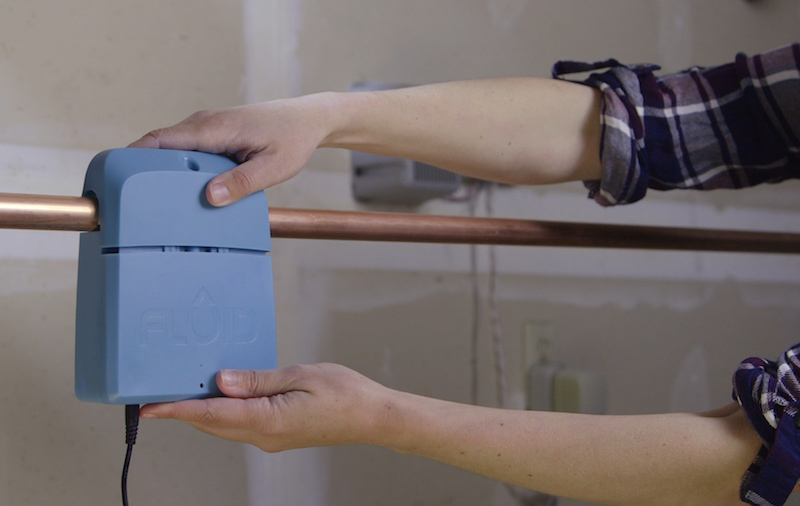Comprehensive Guide to Water Leak Detection for House Owners and Organizations
Comprehensive Guide to Water Leak Detection for House Owners and Organizations
Blog Article
Cutting-edge Solutions for Very Early Detection of Water Leakages in Buildings and Infrastructure
As the integrity of structures and facilities is critical, the obstacle of early discovery of water leaks has actually stimulated innovative remedies that guarantee to reinvent the means we safeguard against possible damages. From advanced leakage discovery modern technologies to the release of IoT sensors for real-time surveillance, the landscape of leak prevention is progressing rapidly. Maker learning algorithms supply a peek right into the future of leakage prediction, while thermal imaging provides a non-intrusive approach for identifying surprise leaks. Automated water flow evaluation systems are improving how leaks are recognized and addressed, leading the way for a proactive technique to water leakage detection. Each of these services holds the crucial to ensuring the dependability and long life of our built environment, motivating a shift towards a much more lasting and reliable future.
Advanced Leakage Discovery Technologies
Advanced leakage detection innovations, furnished with sophisticated sensing units and formulas, play an important function in quickly determining and identifying water leakages in different settings. These innovations utilize a mix of acoustic, thermal, and electro-magnetic noticing techniques to find leakages precisely. Acoustic sensors spot the sound of leaving water, allowing for precise localization of the leakage resource. Thermal imaging finds temperature level modifications created by water leak, giving another effective method for leak recognition. Electro-magnetic sensing units can determine modifications in electromagnetic areas triggered by water, using yet an additional layer of leakage detection capacity.

IoT Sensors for Real-Time Surveillance
In the realm of contemporary water leakage detection, the combination of IoT sensing units for real-time monitoring stands for a crucial development in improving aggressive leak detection capacities. These sensing units use continual monitoring of water supply, offering real-time information on water flow prices, stress variations, and temperature level changes. By leveraging IoT innovation, these sensors can spot even the tiniest anomalies in water use patterns, enabling early recognition of prospective leakages prior to they escalate into major issues.
IoT sensing units transfer information to a centralized system, where innovative algorithms analyze the info and create signals or alerts when abnormalities are detected. This real-time monitoring capacity permits residential or commercial property owners or facility supervisors to without delay resolve leakages, lessening water damages, decreasing repair work costs, and conserving water sources.
In addition, IoT sensing units can be incorporated with building management systems, allowing for computerized actions to found leaks, such as shutting down water shutoffs or triggering explanation pumps to reduce the impact of leakages. On the whole, the application of IoT sensors for real-time surveillance dramatically improves the performance and efficiency of water leak discovery in buildings and infrastructure.
Artificial Intelligence Algorithms for Leakage Prediction

One key advantage of utilizing artificial intelligence for leak forecast is its capability to constantly learn and improve its precision with time. As even more information is gathered and fed into the algorithm, it can refine its predictions and adjust to transforming problems, inevitably boosting the integrity of leakage discovery systems.
Furthermore, artificial intelligence algorithms can aid in identifying refined indications of leaks that may go undetected by standard monitoring methods. water leak detection. By assessing intricate data sets in real-time, these formulas can offer very early warnings and informs, enabling for timely intervention and preventative upkeep to mitigate possible water damages and associated expenses
Utilizing Thermal Imaging for Leak Discovery
Thermal imaging technology offers an encouraging method for discovering water leakages in different systems and facilities. By making use of infrared radiation and temperature variations, thermal imaging cams can recognize covert leaks that are not quickly noticeable to the naked eye. When water runs away from pipes or structures, it frequently alters the temperature of the bordering location, creating temperature level differentials that thermal cams can catch. These click this site temperature abnormalities are after that equated right into visible images, highlighting the specific place of the leak.
One of the crucial benefits of thermal imaging for leak discovery is its non-intrusive nature. Overall, the use of thermal imaging technology improves the effectiveness and precision of water leak discovery, making it a useful tool for keeping the stability of buildings and frameworks.
Automated Water Flow Evaluation Solutions
Just how can automatic water flow evaluation systems revolutionize the discovery and administration of leakages in different systems and frameworks? Automated water flow analysis systems use a proactive strategy to leak discovery by continuously monitoring water circulation prices and patterns. By establishing standard data, these systems can swiftly identify inconsistencies that may suggest a leak, allowing punctual intervention to stop substantial damages.
These systems utilize sophisticated algorithms to evaluate real-time information and provide instant alerts when anomalies are detected, enabling speedy action to be taken. Furthermore, computerized water flow analysis systems can be incorporated with building administration systems or IoT systems, boosting general efficiency and allowing remote surveillance capabilities.
Additionally, the information article source collected by these systems can be utilized for predictive upkeep objectives, aiding to recognize possible powerlessness in the framework prior to leakages occur. Overall, the implementation of automatic water circulation evaluation systems can dramatically boost leakage detection and administration practices, ultimately leading to set you back financial savings, minimized water waste, and enhanced sustainability in buildings and infrastructure.

Verdict
To conclude, the integration of sophisticated leakage discovery modern technologies, IoT sensing units, machine knowing algorithms, thermal imaging, and automatic water flow analysis systems uses ingenious remedies for very early discovery of water leakages in structures and framework. These modern technologies make it possible for real-time surveillance, forecast of leakages, and reliable discovery approaches to avoid water damages and waste. Carrying out these options can assist in preserving the integrity and sustainability of water systems in different settings.
Report this page